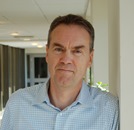Day 2 :
Keynote Forum
Yoshiro Fujii
Shin Kobe Dental Clinic, Japan
Keynote: Dental treatment for dementia: The relationship between oral and brain condition
Time : 09:30-10:15

Biography:
Abstract:
Keynote Forum
Rajendra Harnagle
Modern Institute of Medical Sciences & Sewakunj Hospital, India
Keynote: Role of yoga in empowerment and strengthening of elderly
Time : 10:15-11:00

Biography:
Abstract:
- Geriatric Services | Geriatric Case Studies | Elderly Care | Biological Gerontology | Geriatric Syndromes | Geriatric Medicine | Geriatric Treatment
Location: Concorde Suite 3

Chair
Lena Sandin-Wranker
Lund University, Sweden

Co-Chair
Sambe Asha Devi
Bangalore University, India
Session Introduction
Stephen Gethin-Jones
University of Central Lancashire, UK
Title: Home alone? A mixed methods study of different perceptions of social isolation between care managers and older housebound adults
Time : 11:25-11:55

Biography:
Abstract:
Lena Sandin-Wranker
Lund University, Sweden
Title: Gender perspectives among older people living with pain
Time : 11:55-12:25

Biography:
Abstract:
Gunn Tove Minde
University of Tromso, Norway
Title: A culturally-sensitive approach to elderly care
Time : 12:25-12:55

Biography:
Abstract:
Catharina Gillsjo
University of Skovde, Sweden
Title: Reflective STRENGTH-giving dialogue: A method developed to support older adults in learning to live with long-term musculoskeletal pain at home
Time : 13:40-14:10

Biography:
Abstract:
Anne Cooney
Athlone Institute of Technology, Ireland
Title: Investigating social capital and the older person in the Midlands region, Ireland
Time : 14:10-14:40

Biography:
Abstract:
Sambe Asha Devi
Bangalore University, India
Title: Vitamins as neuroprotectants against oxidative stress caused by intermittent cold exposure in the aging rat brain
Time : 14:40-15:10

Biography:
Abstract:
Hsin-Yin Hsu
Mackay Memorial Hospital, Taiwan
Title: Impact of serum albumin on functional status and hospital outcome in oldest-old inpatients
Time : 15:10-15:40

Biography:
Abstract:
Jiraporn Srion
Vajira Hospital, Thailand
Title: Revisit, subsequent hospitalization, recurrent fall And death within 6 months after a fall among elderly emergency department patients
Time : 16:00-16:30

Biography:
Abstract:
Boris Punchik
Ben-Gurion University of the Negev, Israel
Title: Out of sight, out of mind? Does terminating the physical presence of a geriatric consultant in the community clinic reduce the implementation rate for geriatric recommendations
Time : 16:30-17:00

Biography:
Abstract:
Isaac M Danat
University of Wolverhampton, UK
Title: Prediction of body mass index in old age to dementia risk: A systematic worldwide literature review and a new study from China
Time : 17:00-17:30

Biography:
Abstract:
- Geriatric Diseases | Elderly Care | Geriatric Treatment | Geriatric Medicine | Geriatric Services
Location: Meeting Room 9

Chair
Anthea Tinker
Kings College London, UK

Co-Chair
Yoshiro Fujii
Shin Kobe Dental Clinic, Japan
Session Introduction
Mary Hannon-Fletcher
Ulster University, UK
Title: Oxidative DNA damage is elevated in renal patients undergoing haemodialysis
Time : 11:20-11:50

Biography:
Abstract:
Gunnar Johansson
Halmstad University, Sweden
Title: Effects of a shift from a mixed diet to a lacto-vegetarian diet on disease risk markers for cancers and coronary heart diseases
Time : 11:50-12:20

Biography:
Abstract:
Anthea Tinker
King’s College London, UK
Title: Why should medical students study social gerontology?
Time : 12:20-12:50

Biography:
Abstract:
Osama Y Alshogran
Jordan University of Science and Technology, Jordan
Title: A pilot study of the effect of chronic kidney disease on steady-state disposition of Warfarin and Warfarin alcohols
Time : 12:50-13:20

Biography:
Abstract:
Shoroq M Altawalbeh
Jordan University of Science and Technology, Jordan
Title: Cost utility analysis of long acting beta agonists versus leukotriene receptor antagonists in older adults with asthma receiving concomitant inhaled corticosteroid therapy
Time : 14:05-14:35

Biography:
Abstract:
Laura Calza
University of Bologna, Italy
Title: Should we screen for cognitive decline and dementia? Old problems and new instruments
Time : 14:35-15:05


